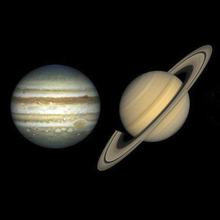The University of Illinois Springfield’s popular Friday Night Star Parties will be held in a virtual format this fall due to the COVID-19 pandemic.
Participants can watch the virtual star parties on Zoom from 8-9 p.m. on Sept. 10, 17, and 24 and Oct. 1, 8, 15, 22 and 29. The Zoom link will be posted online.
Graduate Education
Welcome to Graduate Education at UIS
We are pleased that you have chosen to explore our graduate degree and certificate programs. More than 40% of UIS students are engaged in graduate study, and most were attracted to UIS by an impressive combination of factors that include educational quality, value and campus location and setting.
Virtual summer stargazing
The University of Illinois Springfield's long-standing Star Parties have gone online, for now, to accommodate safe social distancing of participants.
UIS announces spring and summer virtual star parties
The University of Illinois Springfield’s popular star parties are returning as virtual events this spring and summer. The Astronomy-Physics Program is planning six virtual star parties at 7 p.m. March 12, 8 p.m. April 9, 8:30 p.m. May 14, June 11 and Aug. 12 and 9 p.m. July 9.
UIS Observatory to hold a virtual Star Party for the great conjunction of Jupiter and Saturn
The University of Illinois Springfield Observatory is holding a virtual Star Party for the great conjunction of Jupiter and Saturn from 5-6:30 p.m. Monday, Dec. 21.
Participants can learn more and watch the virtual start party on Zoom by accessing the link at go.uis.edu/starparties.




